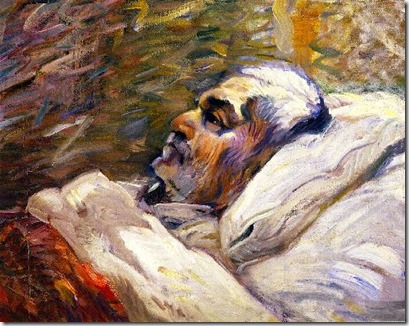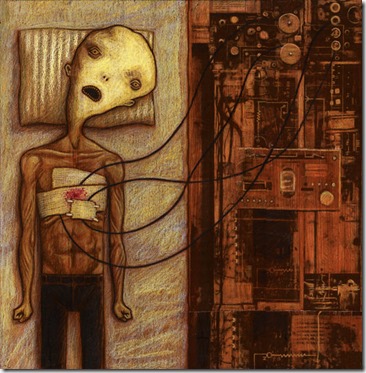Nei paesi più avanzati è il mercato che distribuisce i beni, eppure esistono delle eccezioni per le quali sembrano valere leggi differenti, qui vorrei occuparmi dei servizi sanitari.
Ma cosa caratterizza questo bene per ricevere un trattamento tanto particolare? Alcuni studiosi hanno teorizzato sul punto, oggi l’ortodossia individua due caratteristiche.
1) BENE ESSENZIALE. Si tratta di un bene primario il cui accesso deve essere garantito a tutti per ragioni etiche;
2) SELEZIONE AVVERSA. Se l’assicurazione sanitaria fosse libera i “cagionevoli” avrebbero un incentivo a sottoscriverla e, poiché l’assicuratore questo lo sa, il prezzo medio di una polizza sarebbe più elevato del dovuto. Da qui la necessità di un’assicurazione universale.
Ma l’ortodossia non soddisfa.
Anche il cibo è un bene essenziale, eppure nessuno si sogna di nazionalizzare i supermercati. Se proprio si vuole far qualcosa per i più bisognosi si stampano dei buoni (food stamps) e si distribuiscono.
La selezione avversa, poi, è un concetto teoricamente valido ma che non trova riscontri nella realtà dei fatti, e il motivo è presto detto: le persone più scrupolose nel condurre una vita sana sono anche le più inclini ad assicurarsi parando ogni rischio sanitario. Diciamo che la coscienziosità è una loro prerogativa e si fa sentire in tutti gli ambiti della vita.
Bisogna quindi percorrere altre vie. Ecco allora due singolari caratteristiche della merce-salute da cui vale la pena partire.
1) SHOW YOU CARE (SYC). La salute è un ambito in cui ostentare quanto teniamo ai nostri cari e a noi stessi: “per mio figlio voglio il meglio!”, “io mi curo, sono un tipo coscienzioso… io”. La sindrome SYC trova qui manifestazioni particolarmente acute. Vogliamo pensarci a rischio zero anche quando i rischi sono ineliminabili.
2) LOTTERIA DELLA DIAGNOSI (LD). Nella sanità moderna ci sono molti esami molto costosi che molto probabilmente non serviranno a niente… ma che nonostante tutto potrebbero salvarti la vita! Si pone allora il problema se prescriverli o meno. Un buon avvocato, per esempio, potrebbe mettere nei guai un medico che non avesse somministrato quel particolare esame che si sarebbe dimostrato decisivo, cosicché la prudenza fa sì che vengano somministrati tutti, ma in questo modo la diagnosi diventa costosissima. Il fatto è che alcuni paesi sembrano pieni di “buoni avvocati”.
Prima di far interagire i diversi concetti menzionerei un fatto clamoroso che tende a sfuggirci.
FATTO: si registra da tempo un’ampia convergenza di opinioni sulla mancata correlazione tra spesa sanitaria e salute. Questo è vero superata una certa soglia che i paesi avanzati si sono lasciati alle spalle da decenni.
Sebbene il fatto sia clamoroso, chi è consapevole del SYC non viene certo colto di sorpresa.
Per estrarre qualche considerazione dalle premesse fatte, puo’ essere utile distinguere il sistema sanitario USA dal sistema sanitario UE: anche se i due sistemi sono molto più simili di quel che si pensi, vale la pena di sfruttare le differenze per individuare punti forti e punti deboli, e magari immaginare così un sistema ottimale che metta insieme il meglio.
Il sistema USA è finanziato da poche grandi assicurazioni regolamentate, quello UE da un’unica assicurazione pubblica.
Sul lato dell’offerta, le differenze sono ancora minori: negli USA il privato gioca un ruolo importante ma ormai anche nella UE il privato accreditato avanza, in alcuni paesi nordici siamo oltre il livello statunitense.
Il sistema USA costa meno: l’offerta è più produttiva. Questo probabilmente è dovuto alla forte base privata nella produzione dei servizi.
Il sistema USA è più innovativo. Le macchine negli ospedali UE vengono dagli USA.
Il sistema USA registra produce una spesa sanitaria molto maggiore. Cio’ fa sì che esistano parecchi cittadini senza copertura sanitaria.
Perché?
E’ un effetto combinato di LD e SYC.
Descrivo allora brevemente il contributo di LD. Se mi ammalo vado dal mio dottore privato il quale mi prescrive TUTTI gli esami più costosi. Perché mai non dovrebbe farlo? lui è incentivato ad agire così per mettersi al riparo da ogni rischio legale, io non faccio certo resistenza, tanto paga l’assicurazione.
E l’assicurazione? Si tratta di organismi para-statali, le loro rendite sono più che altro politiche, la spesa non le preoccupa, l’importante è controllare il settore. Credete forse che Obama avrebbe potuto mettere in piedi la sua riforma con l’ostracismo delle grandi assicurazioni?
Poi c’è il contributo di SYC. L’accesso diretto alle cure, tipico del sistema USA, scatena la sindrome SYC in una gara al rialzo: “io scelgo di curare i miei figli più di te perché io voglio il meglio di loro mentre tu - che sei un genitore degenere - no”. Su uno che ragiona così la pubblicità ha un certo effetto, inutile negarlo.
Nella UE, per contro, non esiste un accesso diretto alle cure, non esiste nemmeno la pubblicità dei trattamenti sanitari!, i medici delle ASL – praticamente degli impiegati statali - fanno da provvidenziale filtro.
Una volta un boss della corporazione medica ebbe a dire: “il governo ci dica quanto vuole spendere e noi provvederemo”. Nei periodi di vacche grasse la politica dà il via libera e il protocollo degli esami da prescrivere diventa generoso, nei periodi di crisi viene dato lo stop e ai medici viene il braccino. Guarda caso. Qualcosa che “serve” quando il PIL è positivo, non “serve” più quando siamo in recessione.
Con il filtro dei medici ASL non c’è trippa per gatti (pardon, per gli avvocati). Anche la sindrome SYC viene tenuta sotto controllo: una volta che il genitore è andato dal medico della mutua si sente in pace con se stesso, sente di aver fatto il suo dovere di buon padre di famiglia.
Ora, cerchiamo di immaginarci il sistema ideale.
Sulla qualità ci sono pochi problemi: picchi a parte sia il sistema sanitario USA che quello UE assicurano una buona qualità.
Il sistema ideale dovrebbe costare poco come quello USA, e magari essere altrettanto innovativo.
Anche questo primo obiettivo è abbastanza facile da realizzare, basta privatizzare l’offerta e creare una certa concorrenza. Ed è proprio quello che sta accadendo sempre di più anche in Europa con il fenomeno del privato accreditato.
D’altro canto, il sistema ideale dovrebbe pesare meno sul consumatore. Come si possono contenere LD e SYC?
Dobbiamo prendere lezioni dal sistema UE? Non necessariamente.
Innanzitutto le assicurazioni dovrebbero essere deregolamentate: oggi sono costrette al prezzo unico e a passare attraverso il datore di lavoro per paura di una inesistente selezione avversa.
Il consumatore dovrebbe partecipare direttamente alla spesa attraverso cospicue franchigie in modo tale che l’assicurazione intervenga di fatto solo in casi “catastrofici” (per esempio sopra i 15.000 euro). In questo modo il consumatore terrebbe sotto controllo LD dicendo al suo dottore: “ma quanto cazzo mi fai spendere, datti una calmata e prescrivimi solo esami che mi servono veramente”.
Se la cosa non bastasse, sarebbe bene che lo stato fissi dei protocolli governativi al fine che anche SYC non faccia troppi guai. In questo senso degli ospedali pubblici potrebbero fungere da riferimento.
Il sistema ottimale, in poche parole, è quello di Singapore: eccellenza a buon mercato. La spesa sanitaria è il 3% del PIL (per chi pensa che il problema siano le assicurazioni).
Finanziamento (conti sanitari individuali) e offerta (ospedali e dottori) sono in gran parte privati ma ci sono anche ospedali pubblici per ancorare le tariffe impedendo al SYC di scatenarsi, così come ci sono delle polizze base e un numero limitato di alternative, tanto per non confondere gli utenti.
Certo, resta fuori l’innovazione, ma non si puo’ avere tutto. L’innovazione, consoliamoci, è un bene su cui è facile costruire una rendita parassitaria non è necessario realizzarla in prima persona, che se la spupazzino gli altri, noi copieremo. In questo senso l’Europa insegna.

